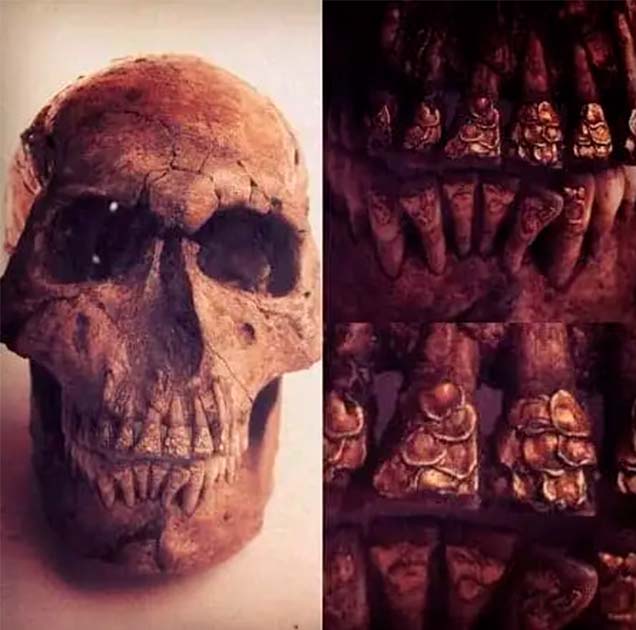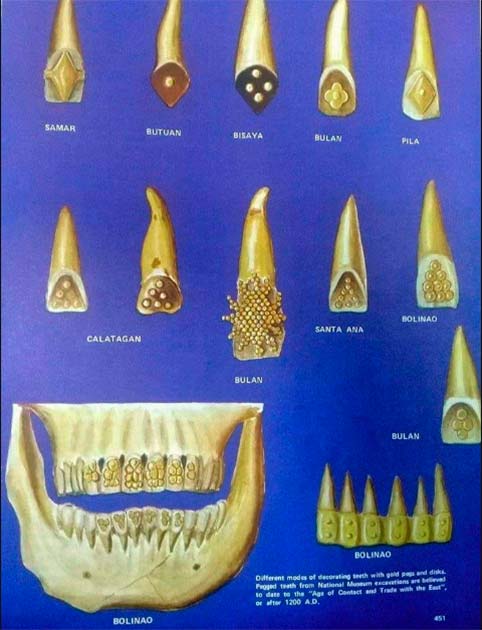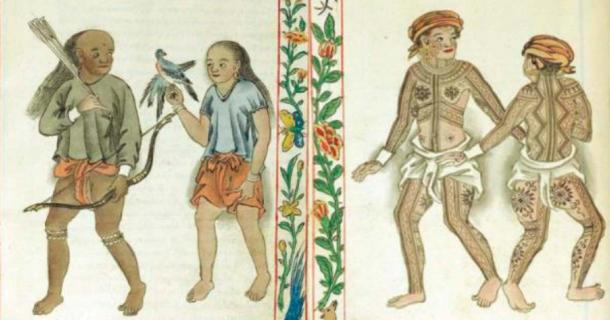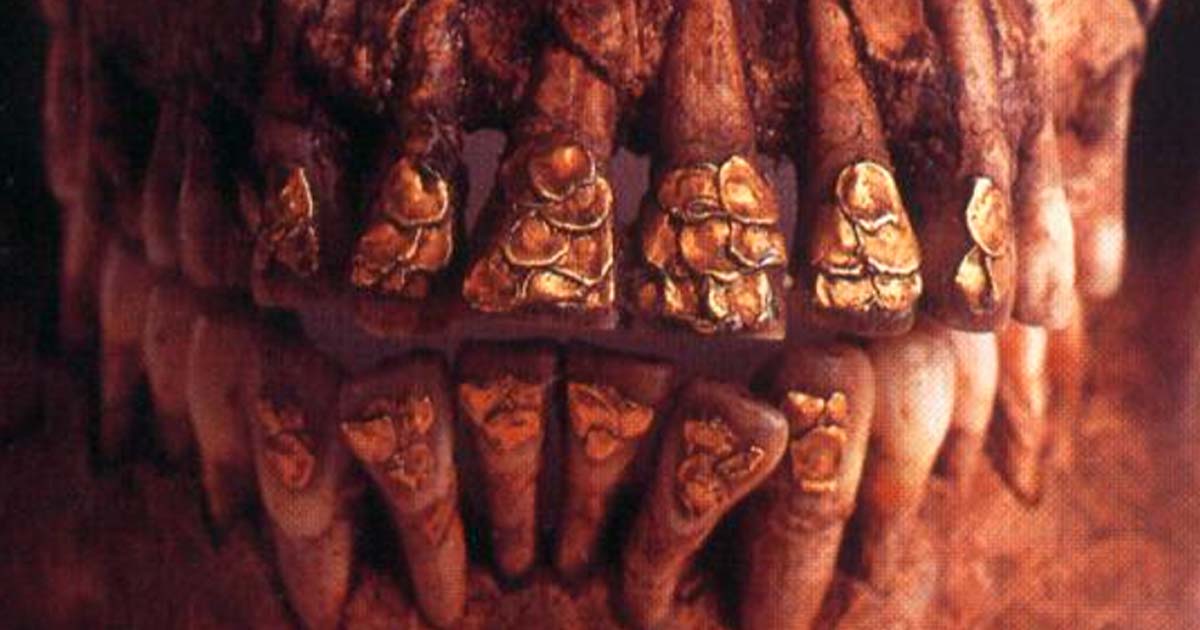Unearthing the Enigmatic Bolinao Skull
The Bolinao Skull came to the attention of the scientific community when it was discovered during an archaeological excavation led by the National Museum of the Philippines. This unique skull was found at the Balingasay Site, together with 67 other skulls, as well as with ceramics dating back to the Early Ming Dynasty in China , around 15th century AD. Combined with these finds and extensive research, the scientists date the skull to between 14th and 15th centuries AD. But what makes it so unique?

The formidable Bolinao Skull is only one of 67 skulls recovered from the Balingasay Archaeological Site in Bolinao, Pangasinan. They were found along with several Early Ming dynasty (1368-1644) ceramics. ( National Museum of the Philippines )
The secret is in the intricate gold dental ornamentation. Numerous flecks of gold adorn the skull’s teeth, creating a stunning pattern that resembles fish scales. The dental ornaments measure approximately 10 millimeters wide by 11.5 millimeters in height.
Author Campo Abeth writes that “ the gold scales were observed to be on the buccal surface of the upper and lower incisor and canine teeth. ” Together, they make a stunning display.
Scientists were intrigued by this incredible decoration, which must have required a lot of skill to create, and could have been quite painful for the person receiving them. Upon further examination, the teeth were found to have had holes drilled in them, which were then filled by gold disks, plugs, pegs, or wire. As a result, each type of gold ornament has a unique look. Needless to say, the wearer likely had a stunning smile, but the procedure must have been extremely painful.

It was fashionable and prestigious back then to have your teeth filed and filled with gold. Early Philippine tradition includes dental modification as a type of personal styling and ornamentation ( Philippine Story )
The Bolinao Skull has provided valuable insights into the cultures of the native tribes of Bolinao, and the entire Pangasinan region in which it lies. Its discovery offers compelling evidence of cultural development of the region in the Middle Ages, before the formation of the modern Philippines. Still, it is important to note that gold dental-work was not uncommon in this part of the world. Before the arrival of Christianity in the Philippines, decoration of teeth with gold was a common practice, and was seen as a symbol of prestige and beauty. In the ancient times, when gold was not worked, people stained their teeth with various roots and plants, giving them different colors. Through centuries, however, gold became more sought after, indicating power and wealth.
The Unique Culture of Native Luzon Peoples
And, through the chronicles of early explorers of the Philippines, we learn that prominent leaders proudly wore their teeth adorned with gold. Antonio Pigafetta, chronicler of the Magellan expedition in 1521, who marveled at the amount of gold jewelry worn by the natives in this region, wrote down that one chieftain “had three spots of gold on every tooth” and when he flashed a smile or spoke, “his teeth appeared as if bound with gold.”

Representations in the Boxer Codex of two of Pre-Colonial Philippines. Public Domain ) and Pintados of the Visayas (Leyte or Samar). ( Public Domain )
So, we know that it was a common and widespread practice in pre-Christian Philippines , unique to many of the different tribes dwelling there. Still, with the arrival of the European colonists, and the spread of Christianity, the practice rapidly dwindled, until it faded into obscurity.
The discovery of the Bolinao Skull, and the 67 other skulls that also bear some gold dental decoration, served as a reminder of the near-forgotten history of the Philippines natives. Through extensive anthropological research, it becomes clear that many of the tribes, especially those living on Luzon – the largest island of the Philippines – saw teeth decoration as an important practice. The famed American anthropologist, Fay-Cooper Cole, documented many of these tribes, speaking of how they stained their teeth with various plants.
A True Golden Smile
In many ways, the study of the Bolinao Skull goes beyond its physical features, and extends into the realm of cultural practices and beliefs of the region’s native peoples. Analysis of the burial context surrounding the discovery reveals intriguing burial customs prevalent during the Middle Ages. Similarly, the presence of Ming Dynasty trade ware ceramics also hints at well-developed trade relations in the region.
All of this makes the Bolinao Skull an exceptional archaeological discovery. Its value for the people of Luzon and the Philippines as a whole is undeniable. Today, the skull can be observed on display at the Pang-ulo Exhibit, 4th floor, National Museum of Anthropology, Manila.
